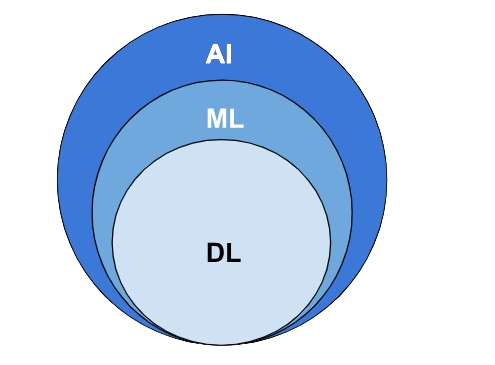AI Series 01: From Basics to Breakthroughs
- Catherine Manin
- Feb 27
- 7 min read
Updated: Apr 19
Artificial Intelligence is no longer a futuristic concept; it’s a powerful force shaping our daily lives.
From self-driving cars and voice recognition to creative content generation, AI is revolutionizing how we interact with technology. We experience AI through virtual assistants like Siri and Alexa, or personalized recommendations on platforms such as Netflix and Spotify. It’s clear: AI is changing the way we live, work, and connect.
This post is the first in a series designed to explore AI’s foundations, and its vast potential. The series will cover topics such as the history of AI, frameworks for implementing it in business, and the crucial role of data. We'll dive into the importance of upskilling for AI, the ethical considerations, and how AI is transforming various industries. We'll also explore automation, AI’s impact on customer experience, and productivity tools. Further, we'll discuss AI’s role in sustainability, small businesses, and personal growth, as well as its psychological impact. Practical tips for integrating AI into everyday life and advancements in AI robots will also be covered.
But what exactly is AI, and how does it work?
In this first post, I’ll break down the essential concepts of AI, machine learning (ML), deep learning (DL), and generative AI (GenAI) — the building blocks of modern AI systems.

What is AI : Understanding the Basics
AI is a branch of computer science focused on creating machines that can think, learn, and act like humans. It enables machines to perform tasks that usually require human intelligence, such as decision-making, problem-solving, language understanding, and even creativity.
AI systems rely on algorithms—step-by-step procedures for solving problems—and vast amounts of data to learn and improve over time.
AI vs. Machine Learning (ML) vs. Deep Learning (DL)
AI is the broadest category, encompassing any system that mimics human intelligence.
ML is a subset of AI that allows computers to learn from data without being explicitly programmed, enabling models to make predictions. For example, an ML model can predict house prices based on historical data.
DL is a further subset of ML that uses complex neural networks to process vast amounts of data and identify intricate patterns. DL excels at tasks like image recognition and natural language processing.

Types of AI
When discussing AI, we must consider its different forms:
Narrow AI (Weak AI): Designed for specific tasks, such as facial recognition or language translation. This is the AI we interact with today.
General AI (Strong AI): A theoretical form of AI capable of performing any intellectual task a human can do. This type of AI does not yet exist.
Superintelligent AI: A future possibility where AI surpasses human intelligence, potentially leading to self-awareness and advanced cognitive abilities. Superintelligent AI is still theoretical. There are ethical considerations and potential risks associated with it.

Machine Learning (ML): The Engine of AI
Machine Learning (ML) plays a critical role in enabling AI systems to learn and adapt based on data. Instead of being programmed with specific rules, ML models find patterns in data and use these patterns to make predictions about new, unseen data.
For example, an ML model trained on customer data can predict which products a user is likely to buy. When Netflix recommends shows you might like, it uses ML algorithms that have learned from your viewing history and the viewing patterns of similar users.
Types of Machine Learning
There are several types of machine learning, each with unique applications:
Supervised Learning: The model is trained on labeled data (data with known outcomes). For example, a spam filter learns from emails marked as "spam" or "not spam."
Unsupervised Learning: The model finds patterns in unlabeled data. This is useful for clustering or anomaly detection. For example, retailers using purchase data to identify customer segments without predefined categories.
Reinforcement Learning: The model learns by interacting with an environment and receiving rewards or penalties. For example, DeepMind's AlphaGo learned to play Go by playing millions of games against itself.
Deep Learning (DL): Taking AI to New Heights
Deep Learning uses deep neural networks—networks with many layers—to analyze complex data. These neural networks mimic the human brain and consist of layers of interconnected nodes that process data.
Each node applies a mathematical function to its input and passes the result to the next layer. Over time, the network adjusts its parameters to minimize errors. This allows AI to process both labeled and unlabeled data (semi-supervised learning).
For example, a DL model can recognize objects in images by processing pixel data through multiple layers, each extracting higher-level features (e.g., edges, shapes, textures), which are then combined to recognize objects.
Deep Learning has a broad range of applications across various fields
Autonomous Vehicles: Processing sensor data to navigate roads.
Image Recognition: Identifying objects in photos (e.g., facial recognition, Face ID on your smartphone). In medical imaging, DL can help doctors detect tumors and other anomalies with greater accuracy and speed.
Natural Language Processing (NLP): Understanding and generating human language (e.g., chatbots, translation services like Google Translate).

Generative AI (GenAI): Unleashing Creativity
Generative AI is a branch of AI focused on creating new content—text, images, audio, and more.
Unlike traditional (Discriminative) AI, which classifies or predicts based on existing data (e.g., identifying whether an image contains a cat), Generative AI produces entirely new outputs. For example, you can ask it to "Draw a cat," and it will generate an image or text description.
It uses deep learning techniques and large datasets to generate novel content. It starts with a prompt (text, image, video) and generates new content as output.
Generative AI Models
Generative AI relies on advanced techniques and architectures to create content. Here are the key models powering this field:
Generative Adversarial Networks (GANs)
How They Work:Two neural networks—a generator and a discriminator—work together. The generator creates content (e.g., images), and the discriminator evaluates its quality. Over time, the generator improves its output.
Applications: Image generation, video synthesis, and creating realistic deepfakes.
Variational Autoencoders (VAEs)
How They Work: These models compress data into a compact representation (latent space) and then reconstruct it, enabling tasks like image generation.
Applications:Image and audio generation, anomaly detection.
Transformers
How They Work: Introduced in 2017, transformers revolutionized Natural Language Processing (NLP) with their self-attention mechanism, which allows them to process and generate text with remarkable accuracy.
Applications:Text generation, translation, summarization.
Foundation Models: The Backbone of Generative AI
Foundation Models are large AI models pre-trained on vast datasets, designed to be fine-tuned for specific tasks. They serve as the foundation for many Generative AI applications.
Examples include :
Google’s Vertex AI: A platform for building and deploying machine learning models.
Stable Diffusion: A generative model for creating high-quality images from text prompts.
Why Foundation Models Matter
Versatility: They can be adapted for various tasks, from language processing to image generation.
Efficiency: Developers can fine-tune pre-trained models instead of training from scratch, saving time and resources.
Scalability: Trained on massive datasets, they are highly capable and adaptable.
Large Language Models (LLMs): Powering Text-Based AI
Large Language Models (LLMs) are a subset of foundation models specifically designed for understanding and generating human language.
Built on transformer architectures, they excel at tasks like:
Text Generation: Writing essays, stories, or code.
Translation: Converting text from one language to another.
Summarization: Condensing long documents into shorter summaries.
How LLMs Work
LLMs use self-attention mechanisms to process and generate text, allowing them to understand context and produce meaningful outputs.
Examples of LLMs include ChatGPT, Claude, and Bard.

Mastering Generative AI: Prompt Engineering and Fine-Tuning
Generative AI can be shaped in two key ways: prompt engineering, which refines how we communicate with AI, and fine-tuning, which customizes the model itself for specific tasks. Understanding both approaches helps maximize AI’s effectiveness.
Prompt Engineering: Guiding AI with Precision
Prompt engineering involves crafting precise inputs (prompts) to guide Generative AI models toward desired outputs. It’s like asking the right question to get the best answer.
Key Principles
Clarity and Specificity: Be clear and detailed in your prompts.
Context: Provide relevant information to help the AI understand the task.
Iteration: Test different prompts to refine the results.
Refining Prompts for Better Results
Text Generation
Basic: "Write a blog post."
Better: "Write a blog post about machine learning."
Excellent: "Write a 500-word blog post for beginners about the benefits of machine learning in healthcare, with 3 real-world examples and a brief explanation of how neural networks work."
Image Generation
Basic: "Draw a house."
Better: "Illustrate a Victorian-style house."
Excellent: "Create a detailed watercolor illustration of a Victorian-style house at sunset with a garden of roses in the foreground."
The difference in results will be dramatic, demonstrating the power of well-crafted prompts!
Fine-Tuning: Tailoring AI for Specific Needs
Fine-tuning involves adjusting a pre-trained AI model using specialized data for a specific task.
It makes the model more accurate for specific tasks, but requires a large amount of computational resources and data. For example, fine-tuning a language model on legal documents can improve its performance in legal text generation.
Many companies are now fine-tuning foundation models to create specialized AI solutions for their industry. For example, a healthcare company might take a general LLM and fine-tune it on medical literature and patient records to create an AI assistant that can help doctors with diagnosis or treatment recommendations.

Conclusion
As AI continues to transform industries and daily life, understanding its fundamentals is no longer optional—it’s essential.
Whether you're a business leader, a professional, or simply curious, grasping key AI concepts will help you navigate our increasingly AI-driven world. Mastering the basics of Machine Learning, Deep Learning, and Generative AI sets the stage for exploring AI’s vast potential. It’s not just a passing trend—it’s becoming an essential part of many industries, and for some, it’s already a natural part of daily life. This is just the beginning of my comprehensive AI series, designed to demystify artificial intelligence and help you make the most of its power, both personally and professionally. In the next post, we’ll dive into the history and key milestones of AI and explore why it’s experiencing unprecedented growth today.
Stay tuned!



Comments